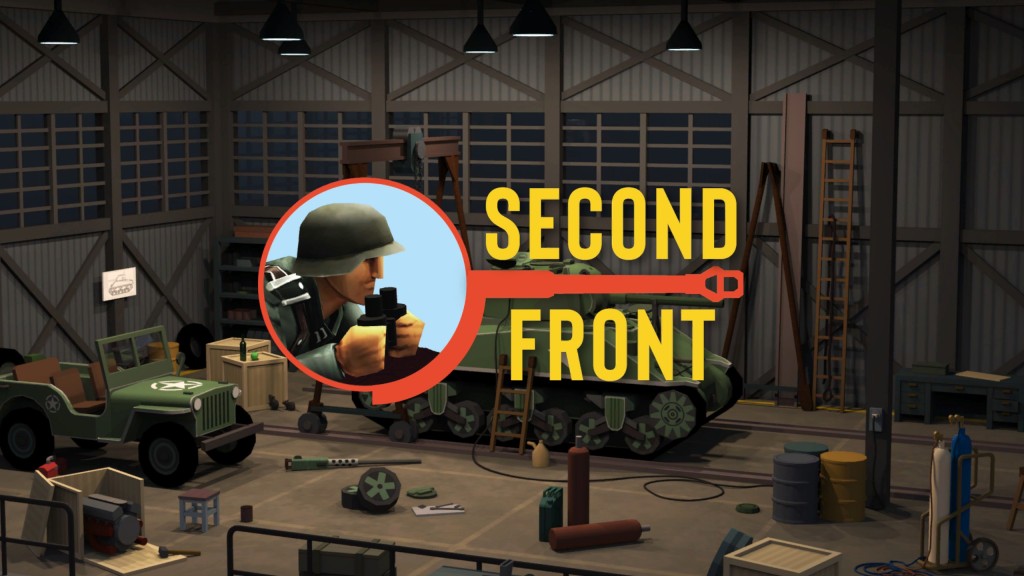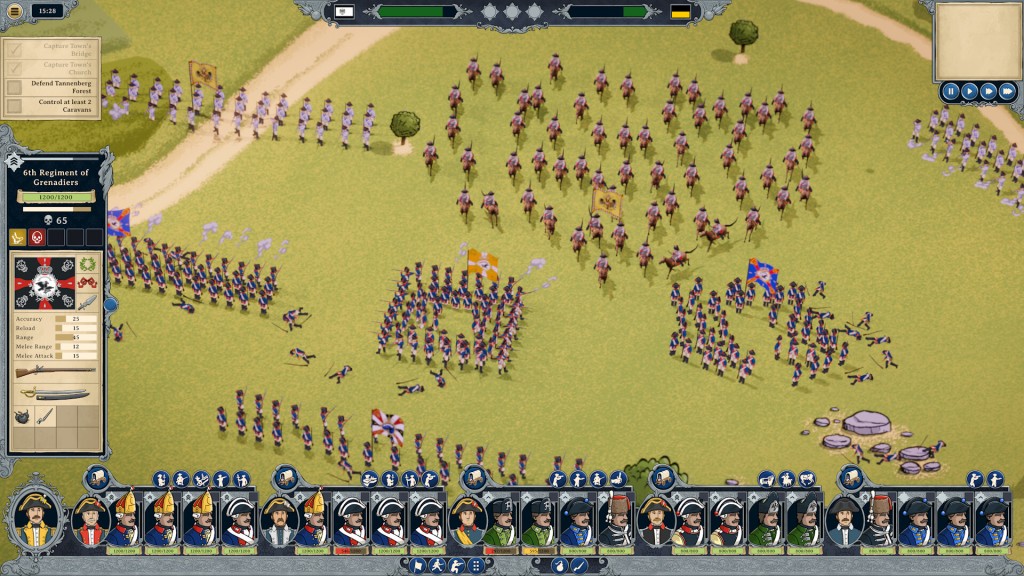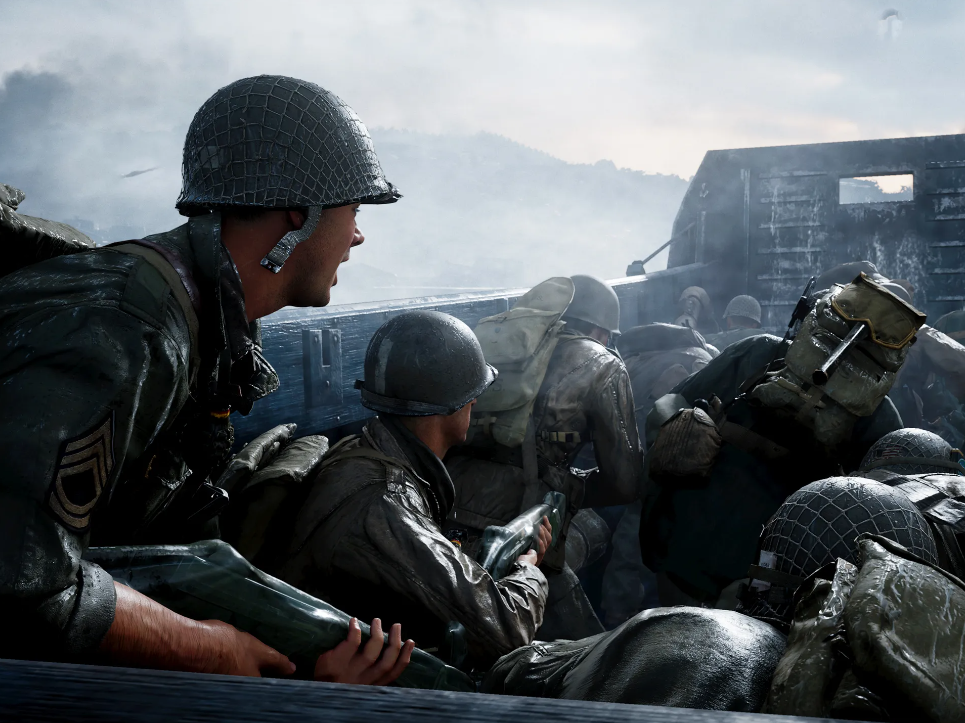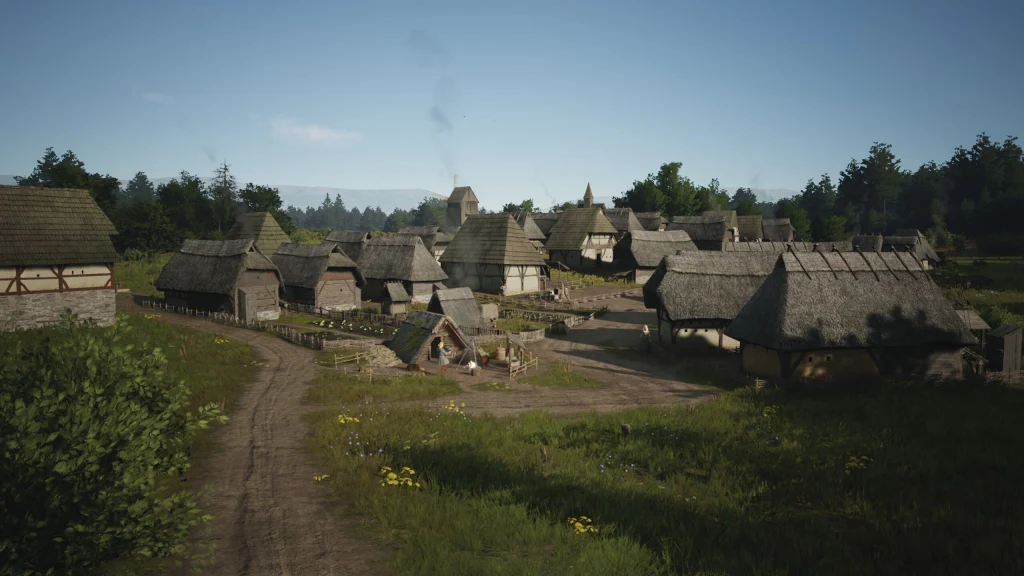Fridays are for weekly news and now for developer interviews. This week me and Joachim Bader, the developer of the up-and-coming Second Front, had a chat discussing his game-to-be. I’ve had access to the game for about a month now and have spent a decent amount of time with it and found myself delighted with the amount of detail Second Front is packing. In this chat we discuss the most wargamey things: Turn phases, hit percentages and modifiers, leader buffs, scenario editing, small units-tactics, AI, even bicycles.
SaW: Hello, Dear Second Front developer, care to enlighten us as to who are you and who is your team?
Jo Bader: It’s me, Joachim and my graphics artist doing this full time and some helping hands to do play-testing. I’ve worked on a smaller game in the past called Tank on Tank Fight!, which was a conversion of a simple wargame. It was a kind of test, but here, at Hexdraw.com you can find my portfolio. MicroProse is my publisher and they are helping with marketing and production.
SaW: Development on Second Front seems to be going great, what is the feedback you’ve been getting from the community at large?
Jo Bader: Ah! People like the graphics and the art style. You are one of the first to play that, so I wanted to ask you: Are you happy with it?
SaW: I’m very happy with it, I got a key to try it out and the game is excellent. I’m just curious because wargames are a weird niche, and you seem to be very talented, sure you could find greener pastures anywhere else, why would you endeavor such an obscure genre?
Jo Bader: I’m a long-time wargamer. I’ve been doing wargaming and coding for 30 years so, yeah. I wanted to do a more complex game and wargames are easier because they’re a niche as opposed to the “Wider Ocean” where those big Sharks are.
SaW: There is clearly a love of love in Second Front, and the game is designed to support a ridiculous number of units and situations. I could clearly see this engine been used in all kinds of conflicts, from medieval to modern, so I got to ask, why World War II?
Jo Bader: No, this engine is only suitable from 1930 to 1954, as after the Korean war it ends.
SaW: Why?
Jo Bader: Ahah! Because it focuses only on firefights and classic rifles. In Vietnam you have different kinds of weapons that can’t fit into the existing system.
SaW: Makes sense and speaking of combat, I am curious as to why would you chose a 4-stage turn? What is the logic behind that?
Jo Bader: When you play it there are indeed four phases. So you move your units and fire and the enemy will fire on you. And those who haven’t fire will fire during the fire phase. Unit routing starts for both sides and then you’re able to move your units one final time into the enemy hex if you manage to dislodge them, and for that you need a final “advance phase”. It’s all about being able to move into the enemy space. In terms of game design, that determines the game, take chess for example, you move into the square of the piece you take off the board. In a lot of other games that is not possible, like in unity of command. So moving into the enemy space, that is a key point in Second Front game design. Also, that way, the routing units have a chance to run away before being outright destroyed.
SaW: That’s interesting, because routing units seem to be happening a lot in the game, am I just bad or is the game designed that way?
Jo Bader: No, it’s quite the opposite. You’re just way too slow. It could be much faster.
SaW: Please elaborate.
Jo Bader: You want to capture the victory points as quickly as possible. If you stand your ground, take no risk and don’t progress then when you do, if you run in the open and the enemy shoots at you then your units will rout very easily. Maybe you’re being too cautious.
SaW: Yes, that makes total sense. The game has a lot of units so far, so are you a hardware fanatic? Because the garage where you can compare units with one another seems to imply you are a big fan of Eugen Systems Wargame series, why do you think this is a worthy addition to the game?
Jo Bader: No, no. There is a video about the garage, here. You will need the garage to design scenarios. Let’s say you pick a date, that’s the first step to design a scenario. Say you pick Stalingrad or something like that. Then you go to the garage, insert the date and that means you’ll only see units available at that point in time. Now you can compare these units, say armor, firepower and mix and match those units while designing the map and don’t end up with Panthers in 1939.
SaW: Sure, so realism and authenticity is a thing.
Jo Bader: Yes, it is. You should try and design a map a few days after D-Day, you can design the map with a focus on bridge defense but let me warn you that the AI right now is not great at defending bridges (chuckling).
SaW: So what kind of work are you doing in the AI? So far they seem competent
Jo Bader: We call the AI “Gretchen” but right now I’m working on weapons and after that I’m going to work more on the AI. But there are some very difficult missions on the game. This scenario is very hard! It can run for 3 and a half hours. I designed it so I had fun, not you, ahahah!
SaW: I’m used to losing a lot in video games, so that’s the perfect scenario for me, it builds character. You have campaigns in the game right?
Jo Bader: Yes, you’ve played the US campaign right? It has 3 missions and your units carry after each mission. Say in the second mission you get two Shermans, if one of them is killed they won’t carry into the third scenario. It’s intended as an introductory campaign.
SaW: Do you have any planned release date for the game?
Jo Bader: I’ll try to release this year but I’m not sure I can. This way I can create a good game and the game I want to create. There’s still a lot of stuff I want to put in the game. We still want to add trenches and overrun mechanics- these things are necessary to include in the final product. Also motorcycles. They are possible to introduce too!
SaW: Why are motorcycles so different to design when compared to tanks, for example?
Jo Bader: It’s not necessarily difficult, but the game is very complex so it takes some messing around, right now I have more than 100,000 lines of code. Also I want to add support and artillery by radios, jungle and desert biomes. Oh! And later other nations like the British and the Finnish after the release! So motorcycles are still really down on the list. Hopefully the game will have a good acceptance by the community and I’ll be able to keep on adding more stuff. Right now I’m more concerned about the readability of things, it feels that it isn’t always clear why your units died or why this and that happened.
SaW: The game seems accessible enough, I’m a slow learner and I got the hang of it just fine, so I’m sure most people will get it too.
Jo Bader: That’s good to hear!
SaW: I really wanted to ask, why this graphical decision? Because they look a lot like Bolt Action Figures, is that intentional or because of monetary reasons?
Jo Bader: The graphics are like these because I want them to be readable at first glance. You have so many different kinds of terrain and units that it is important it’s all understood by the player. It’s a compromise between readability and looking nice.
SaW: Practicality above graphics? Sounds pretty wargamey to me.
Jo Bader: Yes. You see, we also must show more than one unit in a hex and that needs to be clear outright. But hey, these are not high-end graphics but you will get an editor. This is also a question of money because static maps and props are easier to build. We can design a simple building in one day and a bigger building in two days. And I want mooooooooore buildings! Ahah! Besides, I think it looks good enough. Right now I have more than one hundred buildings 120 weapons and guns. You should hit the space bar during a game when the enemy is moving.
SaW: Why?
Jo Bader: It switches to a ground camera and you can play it like that, it might be a bit confusing right now but it looks really nice.
SaW: Ah yes! The “cinematic” camera.
Jo Bader: Tell me about how does it feel when you’re playing the game? What are you thinking when you’re playing?
SaW: First impressions to me are that the game seems really accessible but I can see there are a lot of hidden modifiers behind everything, right? For example, what goes into the hit percentages of a unit while their firing?
Jo Bader: That’s a complex thing. First of all, here’s a tip for you: Don’t run! Whenever you can move without running it’s better. That, for example, gives it a bad modifier. When you want to fire with the tank it must be stopped, also.
SaW: I noticed that with tanks. Because tanks can “fire on the move”, right?
Jo Bader: Yes, they can fire on the move but they’re 100% more accurate when they’re stopped. Stopping is the key element, they had no stabilizers. When you’re firing with a tank and a gun, even if there’s a zero chance, fire anyways because if you fire once in the target, you get a bonus on the next shot you take. It’s 2 times that modifier.
SaW: So, like a ranging shot? I didn’t know that.
Jo Bader: Yes. Also, when you’re fighting at a distance, keep your commander with an open hatch but if you’re going to do close fighting then close it. See this video if you want to find out more about target size and shot probabilities.
SaW: How does cover work in the game? Because buildings have a cover rating, right? What about a “Bocage” for example?
Jo Bader: Bocage has a 2 cover rating, same as a wooden building. Stone building has 3 and so on. You’ll find all about that on a helping tab during the final release.
SaW: By the looks of it, Second Front is going to have a 500 page manual. Looks so simple, but it’s actually really complex. I remember reading about “wind conditions”, how does that work?
Jo Bader: Let’s say you throw a smoke; it follows the wind direction, same thing for blazes in the battlefield. It’s mainly directional wind, but I still need to put some more work on that. Changing winds like wind direction, strength and all that. It’s not implemented right now but later it’s going to impact the kindling of terrain also.
SaW: Does it have any effect when firing?
Jo Bader: No, not on firing. But for example, a burning tank will create smoke and that is going to hinder your ability to fire in a significant way.
SaW: Those are the small things that I’m sure people are going to love to find out! I’ve been playing it and I had no idea.
Jo Bader: Yes, there are a lot of those small things. You know what’s not such a good idea? Firing a bazooka inside a building. You have the option to go out and fire because you have to account for the backblast.
SaW: Any more interesting facts like this? Because you very rarely see this kind of stuff. I love nerding out about this.
Jo Bader: A lot of them to find out. Leaders can rally troops; some German tanks have more powerful machine guns for close combat. The game’s close combat is also very complex; if you’re in rough terrain you can also have ambushes, meaning that you fire first. Firefights are not sequential, meaning it all happens at the same time and both units have the chance to kill and get killed but the ambush makes it sequential, so the one that ambushes fires first. There are a lot of nerdy things like this. Some tanks, Like a German SPG that can only fire when the hatch is open. You can target bridges to damage them with weapons bigger than 70mm even though that’s very likely to happen.
SaW: Out of curiosity, how big of a scenario can you create right now?
Jo Bader: At the moment you can create huge maps. With a maximum of 50 by 50 hexes with 80 units in a single map. But small engagements are pretty fun!
SaW: I’ve always been more a small engagements kind of guy, so that’s why I love these small details, because these things get abstracted most of the time.
Jo Bader: Second Front is a game about small details; I want the game to show this.
SaW: I wanted to ask you about leaders. What’s their role in the game? Why are they separate units and not within squads?
Jo Bader: They’re extremely important. Without a leader, only one units is going to try and rally. For others to rally they need a leader. Broken units cannot be used so having leaders being able to regain control is very important. Leaders also help when firing heavy weapons. It’s a good idea that, when you’re attacking you should have a leader helping, avoid attacking without a leader. It’s still possible to win anyways but it’s not optimal.
SaW: A game-changer then?
Jo Bader: Yes, there are scenarios that when I lose my leaders I just quit. Ahah!
SaW: By my experience, Second Front is already a great game and all that you just said only makes it better. These small details always fly above my head. Thanks a lot for your time, Jo.
Follow Strategy and Wargaming Socials
Strategy and Wargaming needs you to follow its socials. Are we the best strategy gaming website around? I would say so. Heck, what other options do you have? The Wargamer? Please.
So why not give us a follow on the cesspool that is Twitter, or join the 1000 other geriatric patients on Facebook? Or subscribe down below? Or maybe do everything? I don’t care, I’m not your grandmother.
If you enjoyed the article, consider buying me a coffee!
I’ve been running Strategy and Wargaming at my own expense since 2017, with only the ad revenue to cover the hosting, with everything else being done by me. So, if you’re an avid reader, you can afford it, and want to support the website, please consider Buying Me a Coffee by clicking this link, for as low as one euro! If you do, just know that you’re helping out a lot and contributing so that Strategy and Wargaming can continue growing!












Leave a comment